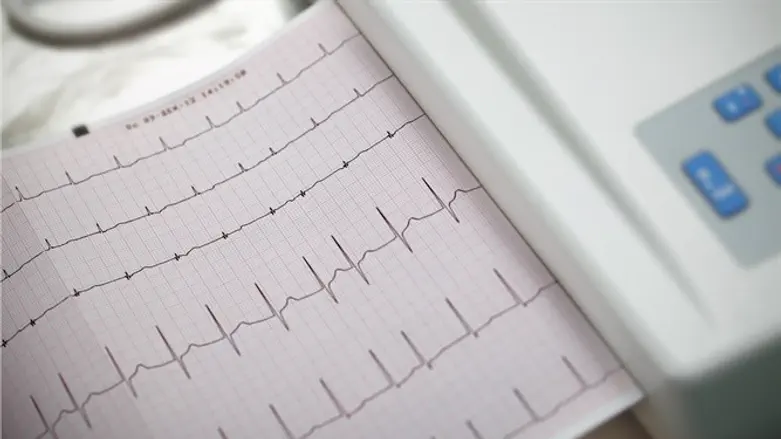
We talked to Prof. Roi Binert, director of the Davidai Center for Arrhythmia Disorders and Pacemakers at Tel Hashomer Hospital.
"The most common disorder is found in three percent of the population and as it increases, between the ages of 70 and 80, it is more than fifteen percent of people who suffer from atrial fibrillation," Prof. Binnert began, noting that it is not a life-threatening disorder, unlike ventricular fibrillation, "atrial fibrillation increases morbidity and mortality from stroke, heart failure, significant decrease in quality of life, and some say it also leads to the development of dementia. Apparently there are several mechanisms for the development of dementia and the thought is that atrial fibrillation causes small cerebral events that have not been clinically observed and that manifest in decreased memory and cognitive status or decreased blood flow to the brain during fibrillation causing brain damage like dementia."
On the ability to identify the problem, Binerett says: "Atrial fibrillation is a phenomenon that about sixty percent feel, especially in irregular heartbeats, shortness of breath, weakness, fatigue, decreased endurance in exertion, dizziness, and even fainting, but there are those who do not feel symptoms and we meet patients who come with "stroke, and then atrial fibrillation is detected. There are a wide range of symptoms but there are quite a few patients who do not feel atrial fibrillation at all and are at significant risk for stroke and morbidity."

In order to cope despite the lack of symptoms, "We recommend that people of older ages, probably over the age of 75 and some believe even earlier, go to the family doctor once a year for a physical examination and even an ECG chart," says Prof. Binert. "There are various factors for atrial fibrillation and some are not under our control such as age, sex, men suffer more than women, but some are factors that can be controlled such as hypertension, diabetes, alcohol consumption, lack of exercise. If we adopt a healthy lifestyle, in this way, we can reduce the risk of developing atrial fibrillation."
"We focus on treatment rather than prevention, because there are many factors that can cause atrial fibrillation. There are several options here. The first thing we do is assess the risk of stroke in patients who come to us with atrial fibrillation, and accordingly determine if blood-based medication is needed. The second step is to avoid fibrillation and return patients to a normal rate by medication or by invasive burn therapy, electrical catheterization that regulates the heart rate, and accordingly we hope to reduce the morbidity and mortality of patients."
According to Prof. Binert, "it is proper to be examined by an arrhythmia specialist who will outline the appropriate treatment. Because there is a dramatic development in the equipment of the invasive operations and on the other hand we know that invasive operations are better than the drug treatment, both because of the side effects that can be life-threatening and because the treatment is more effective than drugs. We are more in the direction of invasive therapy to regulate rhythm."
